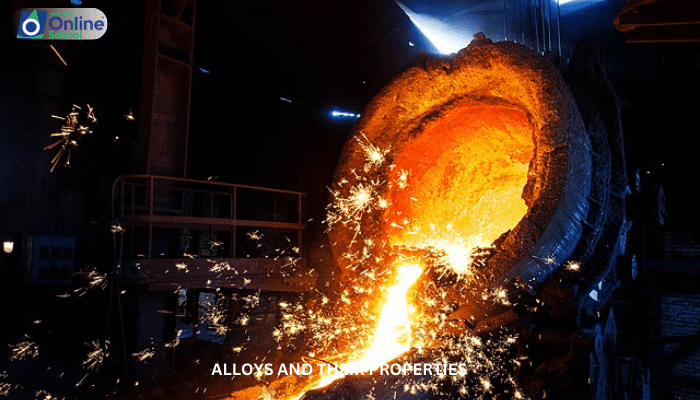
Learning Outcomes:
i. Define alloys and their classification.
ii. Describe the formation of alloys through the mixing of different metals or nonmetals.
iii. Explain the concept of solid solutions and their role in alloy formation.
iv. Analyze the differences between the properties of alloys and their constituent elements.
v. Identify the advantages of alloys over pure metals in various applications.
Introduction
Alloys are a class of materials formed by the combination of two or more elements, typically metals, through various processes such as melting, mixing, and solidification. These materials exhibit unique properties, often superior to those of their constituent elements, making them essential for various industrial and technological applications.
i. Formation of Alloys
The formation of alloys can be achieved through various methods, including:
Melting and Mixing: The constituent elements are melted together and allowed to solidify, forming a homogeneous mixture.
Diffusion: The elements are brought into contact in a solid state, and diffusion of atoms occurs across the interface, resulting in an alloy.
Mechanical Alloying: The elements are subjected to high-energy mechanical processes, such as ball milling, to produce a finely dispersed mixture that eventually forms an alloy.
ii. Solid Solutions
Solid solutions play a crucial role in the formation and properties of alloys. In a solid solution, atoms of different elements substitute for each other in the crystal lattice of the host metal. This substitution can occur in two ways:
Interstitial Solid Solution: Smaller atoms of the solute element occupy the interstitial spaces between larger atoms of the host metal.
Substitutional Solid Solution: Atoms of the solute element replace atoms of the host metal in the crystal lattice.
The formation of solid solutions alters the properties of the alloy compared to its constituent elements. For instance, the addition of solute atoms can modify the hardness, strength, and electrical conductivity of the alloy.
iii. Properties of Alloys
Alloys exhibit a range of properties that differ from those of their constituent elements. These properties include:
Enhanced Hardness and Strength: Alloys often exhibit increased hardness and strength compared to their constituent metals. This is due to the presence of solute atoms that disrupt the regular arrangement of atoms in the host metal, making dislocation motion more difficult.
Improved Corrosion Resistance: Alloys can provide better corrosion resistance than their constituent metals. This is because the alloying elements can form protective oxide layers or alter the electrochemical behavior of the metal.
Tunable Electrical Conductivity: Alloys can exhibit a wider range of electrical conductivities compared to pure metals. The conductivity can be adjusted by varying the composition and type of alloying elements.
Special Magnetic Properties: Certain alloys possess unique magnetic properties, such as ferromagnetism or superconductivity. These properties arise from the interaction of electrons in the alloy and are not observed in the individual elements.
iv. Advantages of Alloys
Alloys offer several advantages over pure metals in various applications:
Tailored Properties: Alloys allow for the tailoring of specific properties, such as strength, corrosion resistance, and electrical conductivity, to meet the demands of specific applications.
Reduced Cost: Alloys often offer better cost-to-performance ratios compared to pure metals. This is because alloying elements can enhance the properties of the metal, reducing the need for expensive or rare materials.
Versatility: Alloys can be designed with a wide range of properties to suit diverse applications, from structural materials in construction to functional materials in electronics and catalysis.
Alloys represent a cornerstone of modern materials science, providing a versatile platform for tailoring material properties to specific needs. Understanding the formation, properties, and advantages of alloys is essential for developing advanced materials that address the challenges and opportunities of the 21st century.